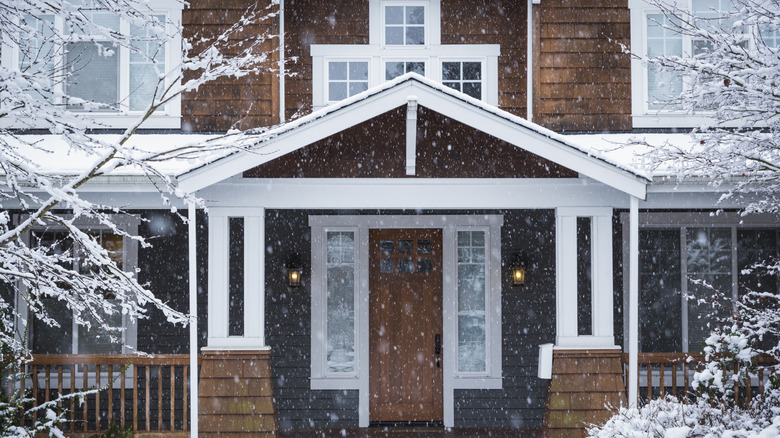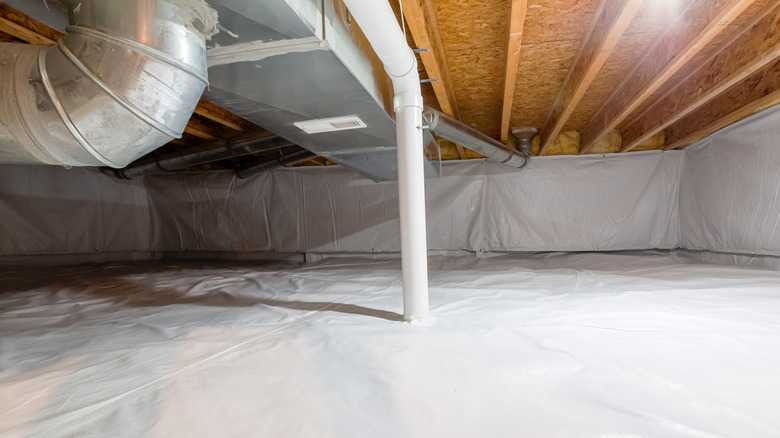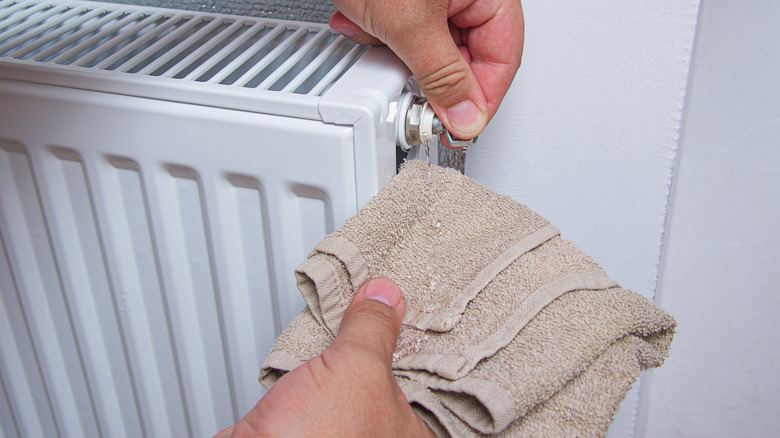Should You Cover Your Crawl Space Vents For Winter? Here Are The Pros And Cons
With winter in full swing, you may be looking for ways to keep your house warm. After all, relying solely on your home's heating system can get expensive fast. But if you've been thinking of covering your crawl space vents, you may want to re-consider it. While covering these vents may do a small bit to conserve heat, it may cause a build-up of moisture in your crawlspace that can affect your overall air quality.
It's easy to see why people may consider covering their crawl space vents to keep their homes warm. Doing so will keep cold air from entering your crawl space, right? If you have a bare crawl space, though, it can cause trouble because air circulation is vital for keeping its humidity levels in check. In fact, most building codes require that your home has crawl space vents.
Many crawl spaces are prone to high humidity because they have dirt floors whose moisture evaporates into the air. In addition, moisture from regular household activities like drying your clothes builds up there, too. If humidity levels get too high, it can cause structural damage to your home like uneven or bouncy floors, cracked walls, and rotting wood. In addition, high humidity in your crawl space may attract pests and impact your indoor air quality. Even with your vents closed, air from your crawl space will still find ways into the rest of your home. Since high humidity can cause mold and mildew growth, you really don't want to breathe that in.
Tips to optimize your crawl space for winter
While crawl space vents serve an important purpose, it is true that they can lead to increased heating costs in the winter. But as outlined above, you shouldn't simply cover them without looking at your crawl space as a whole. Instead, consider employing some tactics to help reduce humidity levels overall so, if needed, you can cover your vents with less issue.
Since dirt floors and a lack of insulation contribute to moisture levels, one of the best things to do is encapsulate your crawl space. You may be wondering, "What is crawl space encapsulation?" Basically, it involves adding thick sheets of polyethylene plastic onto the floors and walls to reduce humidity. However, this process can be expensive. The average encapsulation costs around $8,000. Plus, you'll need to add a dehumidification system. You can either tap into your existing HVAC or purchase a crawl space-specific dehumidifier which generally costs at least $1,500.
Clearly, the costs of properly encapsulating your crawl space can add up. For budget friendly options, you can consider alternatives to encapsulation like using a vapor barrier. In addition to encapsulation, insulating your crawl space can control moisture levels and cut down on heating costs, too. Essentially, insulation creates a thermal barrier that prevents your home from losing heat through the floors. The cost for crawl space insulation varies depending on size and materials. For a 1,000 square-foot crawl space, though, you can expect to spend around $3,000.
Other ways to improve your home's heating
Your crawl space vents aren't the only things that may increase your heating costs. For a warmer house, you can use some of these winter hacks, including adding plastic to your windows to block drafts. This tactic is especially great for homes that may be due for a window replacement but it's not in the cards right now. And while you may want to keep your curtains open during the day to enjoy a little bit of sun, you should close them when it sets to eliminate any extra chill from night time air. For your doors, you can also prevent cold air from entering your home underneath them by using draft stoppers.
In addition to these hacks, you may need to maintenance your heating systems to improve their capacity. In the United States, the most popular ones involve furnaces and boilers. For the former, you may need to change its filter, as a dirty one makes it harder for air to travel throughout your home. The exact frequency that you should replace these filters depends on factors like your climate, whether you have pets, and specific furnace model. As a rule of thumb, you should replace 1- to 2-inch filters every 1 to 3 months, 3- to 4- inch filters every 6 to 9 months, and 5- to 6- inch filters every 9 to 12 months. For boilers, you need to bleed your radiators annually to release any trapped air pockets that will form cold patches.


